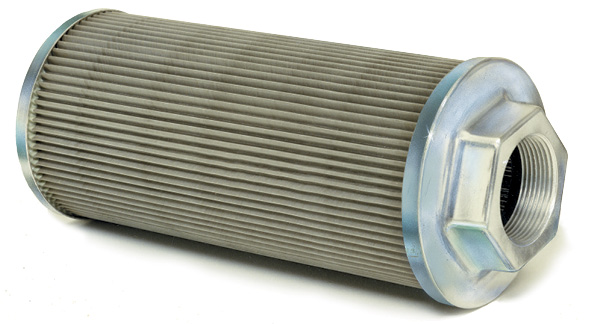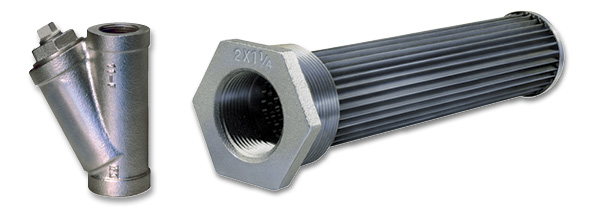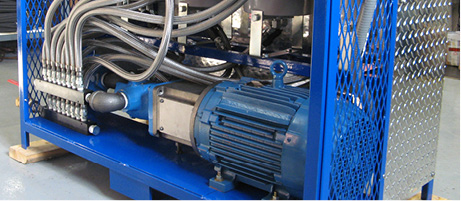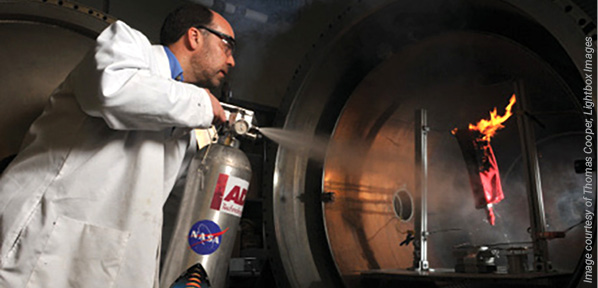Protecting the Heart of the Hydraulic System
By Donald C. Krause, Flow Ezy Filters, Inc.

By controlling contamination and keeping your fluids clean, you can extend the life of all the components in your hydraulic system, working together to complete the task. Installing filtration devices in strategic areas will allow the entire system to operate at peak efficiency. For the purpose of this article, I will focus on an area where there are two schools of thought about placing filtration before the pump.
The most important component in any system is the pump. It is the “heart” of the system. You can view it the same way you look at the human heart. What happens if our hearts stop? All body functions cease to operate. The same applies to the pump. What happens if the pump stops working? All system components cease to operate. Proper filtration is the first step in protecting the entire system’s operation.
Here is where philosophies differ: suction filtration. Yes, you should have some suction filtration in place, and no, you shouldn’t. Glad we cleared that up!
My preferred school of thought is “Yes!” Pumps are rugged and can take a lot of stress. The issue with protecting the pump is to keep out the bigger particles of contamination so as not to place excessive restriction on it. If you get too restrictive, then your pump will cavitate and you will have serious problems.
Straining the Line
Let’s look at two terms: 1) filtering and 2) straining. Do these two terms have the same meaning? Well, somewhat. When protecting the pump, I always refer to straining which, industry-wide, refers to approximately 200 mesh (74 micron) and coarser. This is the level at which pumps should be protected.
Remember, the first component the fluid is going to pass through is the pump. Knowing the number 1 enemy of any system is contamination, your highest priority should be removing particles that are large enough to damage a pump. There are manufacturers who say there should be no filtration in the suction line, and there are manufacturers who say the opposite. Regardless, all pump manufacturers are concerned if designers, operators, maintenance personnel, and users place too tight of a filtration device in the suction line because it could wreak havoc with their pump. The bottom line is if the pump goes down, the system goes down. By placing a suction strainer in the suction line, and keeping the level of filtration open enough so as not to cause cavitation, it becomes a win-win situation.
Listed below are some good rules of thumb to follow in determining at what level of filtration should different types of pumps be protected. Figuring standard hydraulic fluid (150 SUS viscosity) at standard operating temperature (100°F), the suction line flow rate should never exceed 4 ft/sec.
Piston pump
- Low pressure: 250–500 psi—149 micron or 100 mesh
- High pressure: 1,000–2,000 psi—74 micron or 200 mesh
Vane pump
- Low pressure: 250–500 psi—238 micron or 60 mesh
- High pressure: 1,000–5,000 psi—149 micron or 100 mesh
Gear pump
- Low pressure: 250–500 psi—595 micron
- High pressure: 1,000–3,000 psi—149 micron
Keep in mind, these are general rules for typical applications. One thing that’s for certain is there are many different systems with many different applications performing a variety of functions. Always consult a certified filtration specialist if you have any questions or concerns regarding your specific application and equipment.

To Bypass or not to Bypass
The next issue to consider is should the strainers have a bypass? That is, are there ever times that unfiltered fluid should be allowed to pass through the pump? The answer to that question is “Yes!” Especially if your system requires a cold-weather start-up.
Before starting your system in the cold, ensure that you have a bypass in place to allow unfiltered fluid to pass through the pump. Start-up is a temporary event, and as long as you set the bypass in cold weather, there should be no harm to the pump. Trying to start it in the cold weather without a bypass may cause the pump to cavitate, creating larger problems.
Another option for cold weather start-up is to oversize the strainer, which offers more surface area for filtration. This will reduce the pressure drop caused by restricted flow. You may even consider using a coarser filter (larger openings) than what is generally used. Take a look at each application’s total operation. Most suction strainers are available either with or without the bypass option. Some modifications may also be made when using more viscous fluids.
What if you are still not sure what level of filtration to place in your suction line? You can contact a filtration specialist, as mentioned earlier, and keep these rules of thumb handy for reference. Remember to always consider collectively what type of pump is being used, the viscosity of the fluid, the flow rate, the system pressure, and the line size in your selection. The suction line is never a place for filtering (a term generally used for anything finer than 74 micron). Instead, it is normally a place for straining (coarser than 74 micron). Make sure your strainer is sized properly for the application.
Suction strainers are not meant to be a system’s only defense against contamination. I have yet to hear a valid reason for not using suction strainers, provided they are installed properly. Filtration also needs to be installed in the pressure line and the return line. And don’t forget the filler-breather port or tank breather, because airborne particles carry destructive contaminants, too. It is also a wise decision to use a portable filtration device, like a filter cart, to clean and polish the fluid in the system at scheduled intervals. If your pump manufacturer requires a certain level of filtration to protect the pump in order to maintain its warranty, by all means, follow their instructions.
The Best Defense
A familiar concept known to many is reactive maintenance. This is when you fix a problem only after noticing something has gone terribly wrong, but it is always best to remain one step ahead in servicing and maintaining your system at all times. My philosophy is if you don’t have time to do it right the first time, how are you ever going to find the time to fix it when it breaks?
Take a proactive approach to ensure your hydraulic system’s proper operation and longevity. This includes careful system design, regular monitoring, fluid analysis, and preventive maintenance. Suction strainers serve one purpose and one purpose only: to protect the pump. A suction strainer is an inexpensive and effective investment that will safeguard the “heart” of your hydraulic system, and in doing so, prolong its life.







